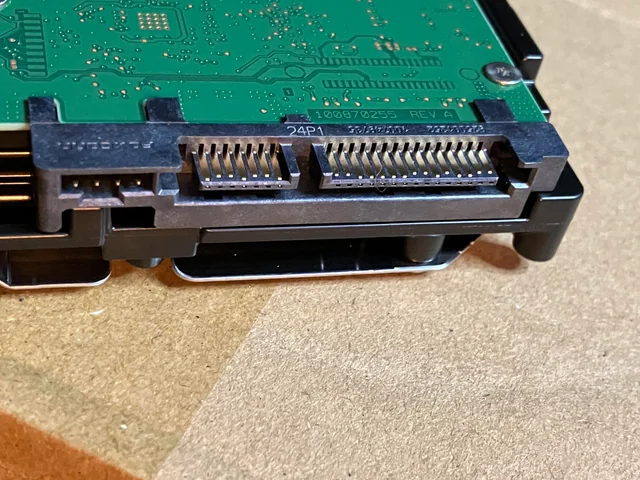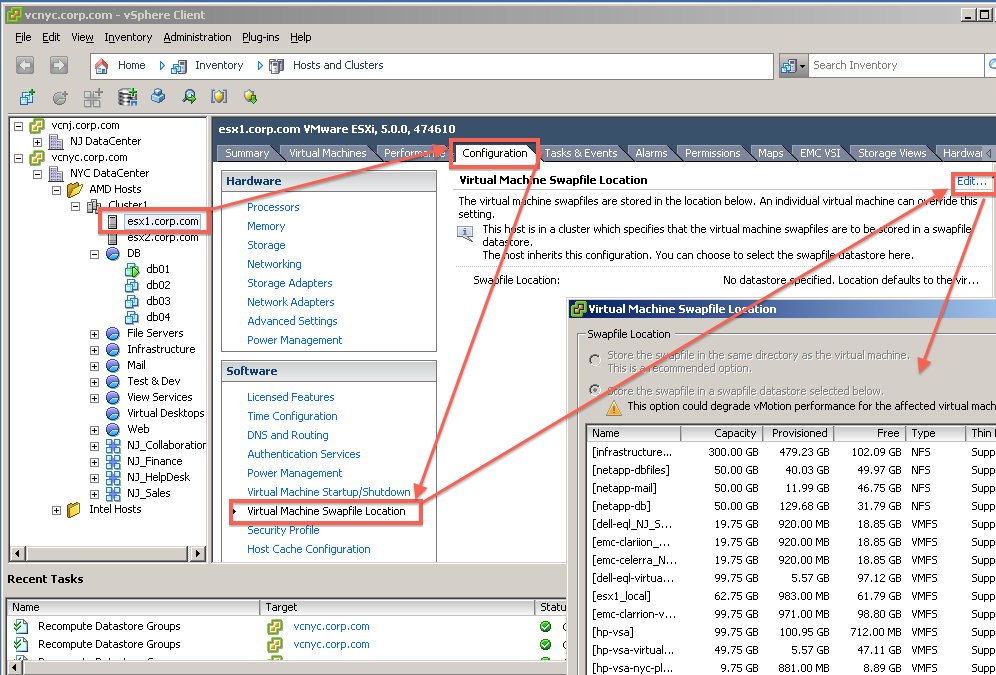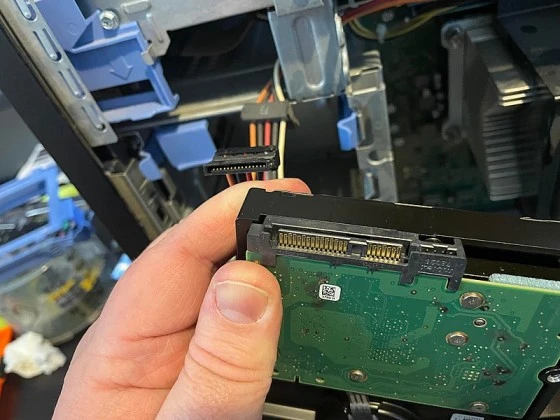Can You Run Sas Controller As A Slave Drive? Disk drives are connected to computers via storage controllers. Storage controllers come in a variety of forms and formats, including IDE, SATA, and SCSI controllers. Virtual storage controllers are devices that link virtual and real drives to virtual computers. VMware virtual machines may connect disks and CD/DVD drives using a variety of storage controller types.
Can You Run Sas Controller As A Slave Drive?

Read Also: How Long Does It Take A Ps4 Controller To Charge
Overview of Storage Controllers
Virtual storage controllers are automatically established in the VMware vSphere VM setup when you create one. Once the virtual machine (VM) is created, you may have two storage controllers if the CD/DVD drive and virtual disk are attached to distinct storage controllers. When building the virtual machine, you may also add extra storage controllers to link disk drives.
The optimum storage controller for the chosen guest operating system is automatically chosen when you build a virtual machine on an ESXi host using VMware Host Client, VMware vSphere Client, or VMware Workstation. This makes choosing the right guest operating system in the virtual machine construction process a crucial job, as we will see.
VMware Storage Controllers that are available
There are several varieties of storage controllers on the market. VMware vSphere virtual machines (VMs) may be equipped with SCSI, IDE, AHCI SATA, or NVM Express (NVMe) storage controllers.
SCSI controllers come in four different subtypes:
- Parallel BusLogic
- Parallel Logic LSI
- SAS Logic LSI
VMware SCSI Paravirtual
Per VMware virtual machine, a maximum of four SCSI controllers are supported. Devices linked to a single SCSI controller are limited to 15 devices.
Parallel BusLogic
One of the first kinds of storage controllers to be mimicked for VMware vSphere virtual machines was this VMware SCSI controller. This controller type may be used in virtual machine settings to install older versions of Windows (like Windows 2000) since older Windows versions come with a driver for it by default. These days, the BusLogic Parallel SCSI controller is regarded as old hardware. Disks greater than 2 TB in virtual machines are not supported. The driver sets a maximum queue depth of 1, which affects performance. The LSI Logic Parallel SCSI storage controller is a viable option if you want increased performance for virtual machine storage.
Parallel Logic LSI
The LSI Logic SCSI controller was the previous name for LSI Logic Parallel. Since the early iterations of the VMware virtualization technology, there has been another VMware SCSI storage controller available. Because these older operating systems come with a driver for this storage device by default. know about the Can You Run Sas Controller As A Slave Drive?
REQUIRES H2
Be aware that installing a guest operating system on a VMware virtual machine (VM) and changing the storage controller may render any virtual disks that are already in place unusable if the guest OS does not have the necessary driver installed. Because VMware Tools provide the driver required to function with the VMware paravirtual SCSI controller, VMware Tools must be installed on the guest operating system.
AHCI SATA
This storage controller is brand-new and has been accessible with Virtual Hardware 10 in VMware vSphere 5.5. The AHCI SATA storage controller allows you to attach a lot of storage, including high-capacity virtual disks, to a VMware virtual machine. Boot disks may be utilized with SATA storage devices to start a guest operating system (OS). Verify that the operating system supports the AHCI SATA controller. In comparison to PVSCI or LSI Logic controllers, performance is not as good. When using different controllers for applications that depend on disk performance, it is preferable. For a virtual machine (VM), the CD/DVD drive typically uses the SATA controller by default.
Compatibility: virtual hardware compatible with ESXi 5.5 or later. Each virtual machine (VM) may handle up to four SATA controllers. A single SATA controller may have a maximum of 30 storage devices linked to it (0-29).
NVMe
The NVMe (Non-Volatile Memory) controller, often known as NVM Express, is a controller designed specifically for SSD storage. For non-magnetic SSDs, the NVMe protocol is used to provide the optimum performance and multi-queue communication. VMware vSphere supports the NVMe protocol, and the NVMe storage controller may be included in the virtual machine setup. There is a maximum of 65535 queues and a maximum depth of 64000 queues.
VMware vSphere 6.5 and Virtual Machine hardware version 13 are required. NVMe support is required for the guest OS. A single NVMe controller may connect to up to 15 disks, and a maximum of four NVMe controllers are supported (0-14).
Read Also: Can You Play Mk One With One Controller On Switch
VMware Storage Controller Configuration
After learning about the many kinds of storage controllers that VMware vSphere offers, let's examine how to modify the storage controller settings in the VMware vSphere Client. In my example, Ubuntu Linux is installed in a virtual machine (VM) that has a default storage controller.
The computer that is virtual.Setup.In order to modify a virtual machine's storage controller settings, a device permission must be added or removed.
Launch the VMware vSphere Client, go to Hosts and Clusters, choose the required host, and then choose the required virtual machine. Hit Edit Settings from the menu that appears when you right-click the virtual machine. Another option is to choose Actions > Edit Settings.
A new storage controller is added
To include an additional storage controller into a virtual machine setup, click Add New Device in the Edit Settings box. From the resulting menu, choose the required controller from the Controllers section. I have the option to choose an NVMe, SATA, or SCSI controller in my example. Now let's configure the SATA controller in the virtual machine.
Changing the Configuration File for VMX

By modifying the VMX configuration file, you may change the SCSI controller type as well as other storage controller types for a virtual machine. This approach may be used via the command-line interface as an alternative to modifying the settings in the VMware vSphere Client GUI. In general, it is advised that you utilize the VMware vSphere Client and only manually change the VMX file in dire circumstances.
Final Notes
Can You Run Sas Controller As A Slave Drive and storage devices like virtual disks are connected via VMware storage controllers. This blog article covered setting SATA, IDE, NVMe, and SCSI storage controllers via the VMware vSphere client's GUI, along with an overview of various virtual storage controller types. Choosing the appropriate controller type is essential for both the functionality of a guest operating system and the storage system's performance. The best storage controller is chosen by default in the virtual machine setup, but you may always modify or add a different controller type by editing the virtual machine parameters.
Read Also: Ps4 Controller Charger: A Complete Guide
FAQs: Can You Run Sas Controller As A Slave Drive
Can SAS controller use SATA drives?
SATA drives may be used to increase storage capacity affordably thanks to SAS controllers. Because SAS controllers and SATA hard drives have comparable characteristics and utilize the same infrastructure, they may be used with each other.
Is SAS faster than SATA?
Speed is the primary difference between SAS and SATA. With a maximum transfer rate of 6 Gbps, SAS drives may achieve substantially quicker transfer speeds than their SATA equivalents, with SATA drives topping out at 3 Gbps.
What is the maximum speed of SAS disk?
SAS SSDs perform somewhat better, with throughputs of up to 12 Gbps and average IOPS of 200,000–400,000.

